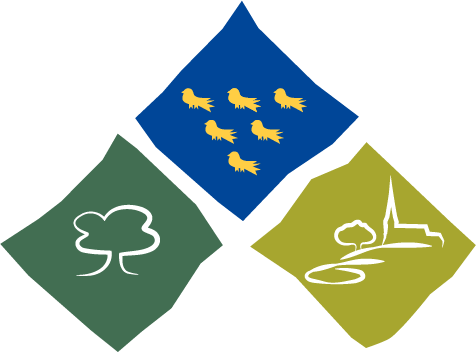The Forge
There used to be a forge in the centre of the village until the mid 1950s. This was in the brick outbuilding belonging to Forge Cottage. The building was arranged such that horses were shod in the front part and the forge and anvil were located towards the rear.
The shoeing of horses entailed making shoes from strips of iron that were shaped by heating them and hammering them to shape on an anvil. Each shoe was made individually to ensure a perfect fit; it was then heated once more and the nail holes punched in it. The completed shoe was matched up to the horse for a final fitting which caused the hoof to burn producing a very unpleasant smell although the horse didn’t seem to mind; he was probably too busy looking for a mirror in which to admire his new shoes! The shoe was then cooled and nailed onto the horse’s hoof.
Another line of work was the making and fitting of steel rims to wooden cartwheels. The rim was made up in the forge premises from strip steel into the correct size for the wooden wheel. The wheel was then taken outside to the cooling bath. This was a sunken circular metal bath about six foot diameter that was full of water. It was set into concrete in front of the garage partly underneath the horse chestnut tree. A small circular platform protruded from the centre of the bath upon which the cartwheel hub rested ready for the rim to be fitted.
The rim was heated in the forge a part at a time, on account of its size. When almost red hot, two men picked up the rim with tongs and rushed out to the cooling bath with it. They hammered the rim onto the wheel and then lowered the whole rim and wheel into the water by means of a foot lever at the side amidst lots of steam. This cooled and shrunk the rim to make a tight fit onto the wheel.
The bath was covered by a dished steel lid when not in use so that people didn’t fall into it. After the forge closed for the day, the local children used to roller skate on it sometimes going round and round on the metal cover.
From about 1920 until 1949, the business was run by the blacksmith and farrier, Stan Skinner. He also had a forge at Burdocks, opposite Old Spencers cottage (previously known as Lock House), where he worked twice a week. There was also a wheelwright’s workshop in a big shed down the green lane roughly opposite.
Bill King took over the business in 1949 after Stan died, but he was only a blacksmith not a farrier, so if horses needed shoeing, they had to be walked to A G Williams’s forge at Billingshurst that was on the site of SCATS agricultural store.
After Bill ceased trading in the mid-1950s, Pat Crichton-Smith acquired the premises and used the forge building as a workshop until the 1980’s. After Pat died, Forge Cottage and its outbuildings were sold and restoration work undertaken. In 2010, Graham Wells and his family moved into the cottage, and as a farrier and blacksmith, is now working in the Forge again.
Jeff Herridge, who used to help with this activity, provided a personal recollection. He worked as a farm labourer in the early 1950’s after he’d left school. One of his tasks on Saturday mornings was to walk a pair of shire horses to be shod to A G Williams forge at Billingshurst. This was located on the site of Mole ValleyCountry Stores. Saturdays were preferred for this type of job as the reshoeing took half a day. Farm workers only worked a half day on Saturday so taking horses for reshoeing on a weekday would have interrupted the working day on the farm.
Shire horses weighed up to 18 cwts (900 Kg) and the farrier knew each one of them by name. The horses visited the farrier roughly monthly as heavy horses wore out their shoes quite quickly. In the warmth of the forge, the farrier was aware that the horses would be totally relaxed and that sometimes, while shoeing the horse, and with the horse standing on three legs (the fourth being held between his legs), the horse would fall asleep and lean on him. As a ton or so of horseflesh could crush him against the wall, someone had to make sure that the horse remained awake and that was Jeff’s job. He did this by standing by the horse’s head and jerking the bit in the horse’s mouth, stroking and talking to him and tapping its nose whenever he became sleepy. The horses were compliant as they were very docile in the warmth.
After the horses were shod, he then walked them back to the farm.
